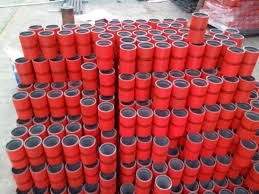- Afrikaans
- Albanian
- Amharic
- Arabic
- Armenian
- Azerbaijani
- Basque
- Belarusian
- Bengali
- Bosnian
- Bulgarian
- Catalan
- Cebuano
- Corsican
- Croatian
- Czech
- Danish
- Dutch
- English
- Esperanto
- Estonian
- Finnish
- French
- Frisian
- Galician
- Georgian
- German
- Greek
- Gujarati
- Haitian Creole
- hausa
- hawaiian
- Hebrew
- Hindi
- Miao
- Hungarian
- Icelandic
- igbo
- Indonesian
- irish
- Italian
- Japanese
- Javanese
- Kannada
- kazakh
- Khmer
- Rwandese
- Korean
- Kurdish
- Kyrgyz
- Lao
- Latin
- Latvian
- Lithuanian
- Luxembourgish
- Macedonian
- Malgashi
- Malay
- Malayalam
- Maltese
- Maori
- Marathi
- Mongolian
- Myanmar
- Nepali
- Norwegian
- Norwegian
- Occitan
- Pashto
- Persian
- Polish
- Portuguese
- Punjabi
- Romanian
- Russian
- Samoan
- Scottish Gaelic
- Serbian
- Sesotho
- Shona
- Sindhi
- Sinhala
- Slovak
- Slovenian
- Somali
- Spanish
- Sundanese
- Swahili
- Swedish
- Tagalog
- Tajik
- Tamil
- Tatar
- Telugu
- Thai
- Turkish
- Turkmen
- Ukrainian
- Urdu
- Uighur
- Uzbek
- Vietnamese
- Welsh
- Bantu
- Yiddish
- Yoruba
- Zulu
Understanding Metric Pipe Couplings for Effective Plumbing Solutions and Applications
Understanding Metric Pipe Couplings Essential Components for Fluid Transport
When it comes to fluid transport systems, the importance of reliable components cannot be overstated. Among these components, metric pipe couplings play a critical role in ensuring connections between pipes are secure and leak-free. As a fundamental element of piping systems, understanding metric pipe couplings is essential for engineers, contractors, and anyone involved in plumbing or fluid transfer applications.
What are Metric Pipe Couplings?
Metric pipe couplings are specialized fittings used to connect two pipes together. They are designed based on the metric system, which utilizes millimeters (mm) as the unit of measurement. This specificity makes metric couplings ideal for applications in regions that predominantly use the metric system, such as Europe and many parts of Asia. They come in various forms, including threaded, soldered, and welded designs, catering to various applications and materials.
Types of Metric Pipe Couplings
1. Threaded Couplings These are one of the most common types, featuring male and female threads on each end. Threaded couplings are easy to install and can be used for both rigid and flexible piping. They are predominantly used in applications involving water, gas, and other fluids under moderate pressure.
2. Socket Weld Couplings This type is typically used in high-pressure systems. The pipe is inserted into a socket and welded in place, creating a robust connection. Socket weld couplings are often found in industrial applications, including chemical and power plants.
3. Flanged Couplings These couplings consist of two flanges that allow for easy assembly and disassembly. Flanged connections are particularly useful in large piping systems where maintenance or repair might be required.
4. Compression Couplings These couplings use a compression mechanism to create a seal around the pipe. They are often used for quick repairs and installations in both residential and commercial settings.
Benefits of Using Metric Pipe Couplings
metric pipe couplings

The primary advantage of metric pipe couplings lies in their ability to provide strong, secure connections between pipes
. The precision of the metric system ensures compatibility with other metric fittings, creating a unified system that minimizes the chances of leaks or failures. Additionally, metric couplings are available in a variety of materials, including brass, stainless steel, and PVC, making them suitable for different types of fluids and environmental conditions.Another significant benefit is the ease of installation. Many metric couplings, especially threaded and compression types, can be installed with minimal tools and expertise, reducing labor costs and time. This ease of use contributes to their popularity in both DIY projects and professional installations.
Considerations for Choosing Metric Pipe Couplings
When selecting metric pipe couplings, a few key factors should be taken into consideration
1. Material Compatibility Ensure that the coupling material is compatible with the fluid being transported. For instance, corrosive substances require corrosion-resistant materials such as stainless steel.
2. Pressure Ratings Choose couplings that meet or exceed the pressure requirements of your system. This is especially crucial in industrial applications where high pressures are common.
3. Size and Dimensions Proper sizing is essential for ensuring a snug fit between pipes. Measure existing pipes accurately to select the right coupling size.
4. Application Environment Consider the environmental factors that may affect the coupling, such as temperature fluctuations, exposure to chemicals, and the presence of vibration or movement.
Conclusion
Metric pipe couplings are essential elements in the world of piping and fluid transport. Their ability to provide secure and reliable connections makes them invaluable in various applications, from residential plumbing to industrial settings. By understanding the different types of metric couplings and their benefits, users can make informed decisions that enhance the efficiency and safety of their fluid transport systems. Whether you are a seasoned professional or a novice, grasping the nuances of metric pipe couplings is crucial to achieving success in any plumbing or piping project.
-
Tubing Pup Joints: Essential Components for Oil and Gas OperationsNewsJul.10,2025
-
Pup Joints: Essential Components for Reliable Drilling OperationsNewsJul.10,2025
-
Pipe Couplings: Connecting Your World EfficientlyNewsJul.10,2025
-
Mastering Oilfield Operations with Quality Tubing and CasingNewsJul.10,2025
-
High-Quality Casing Couplings for Every NeedNewsJul.10,2025
-
Boost Your Drilling Efficiency with Premium Crossover Tools & Seating NipplesNewsJul.10,2025







